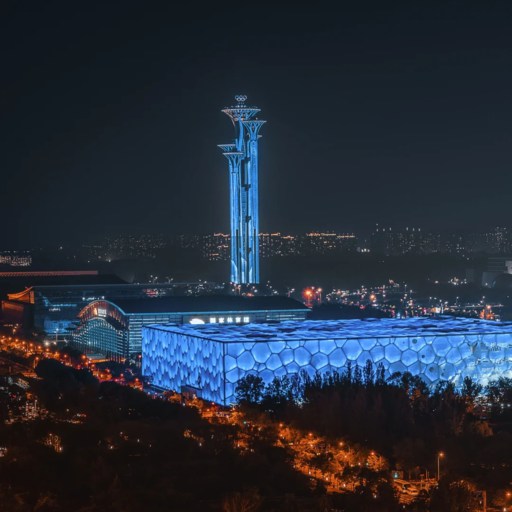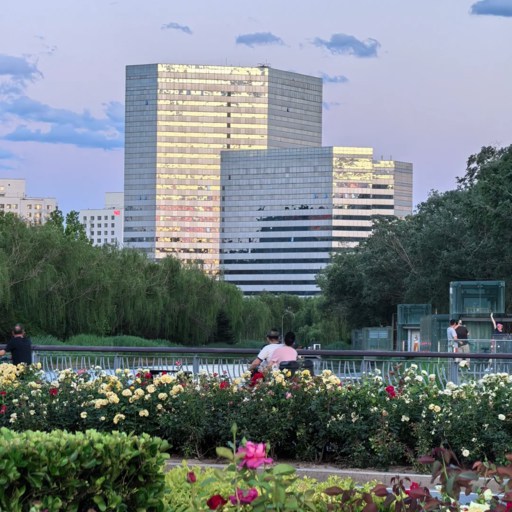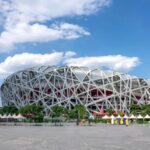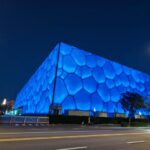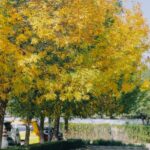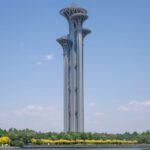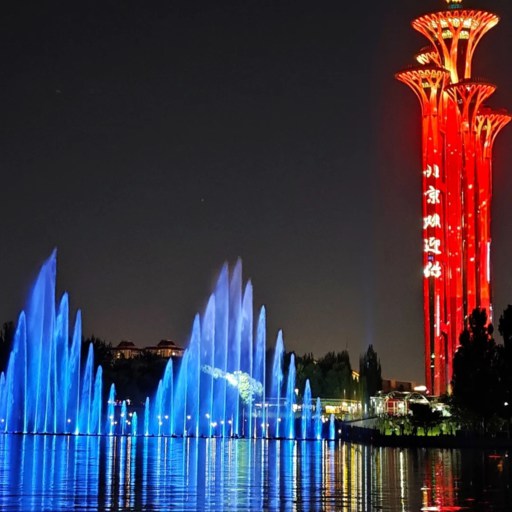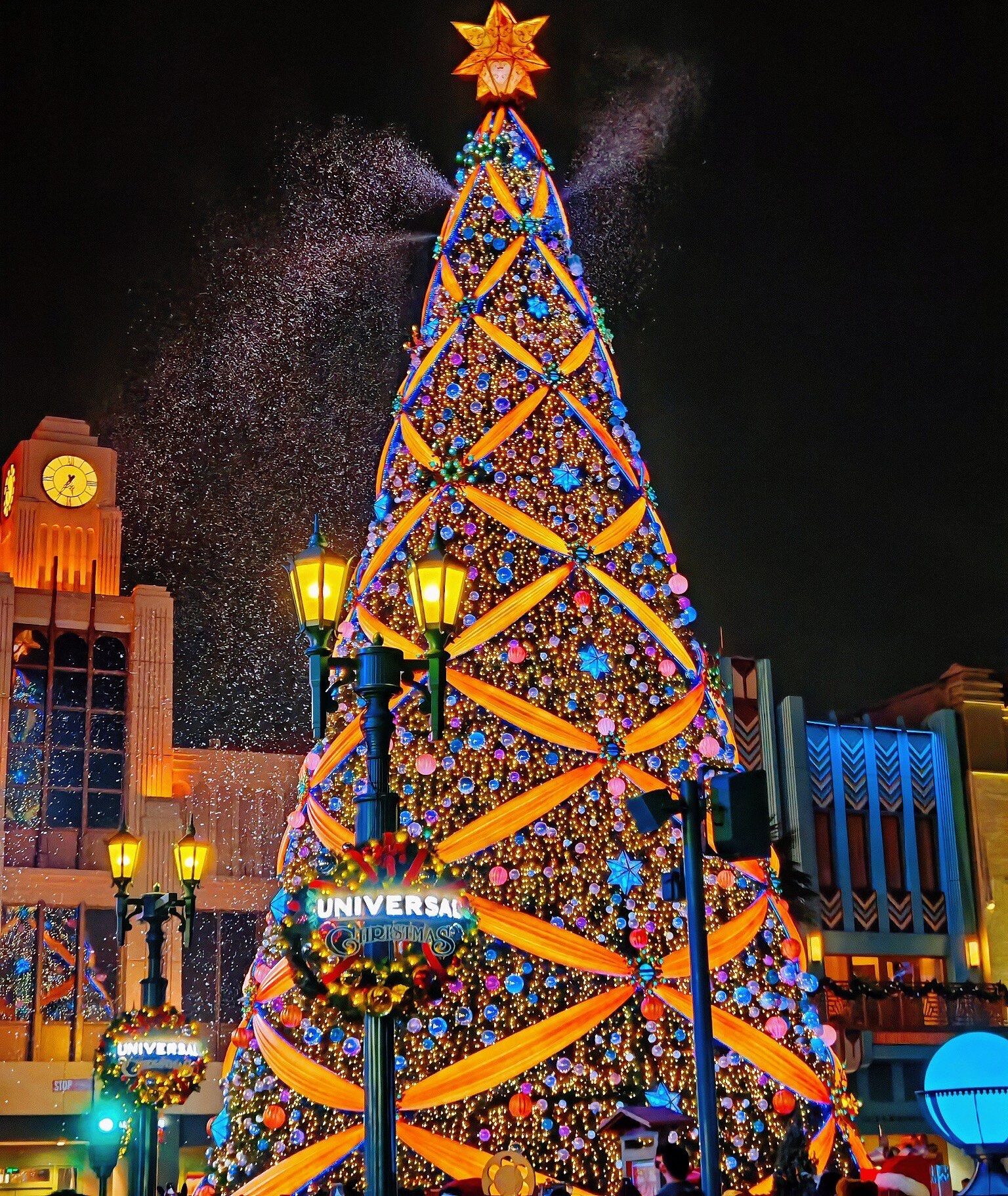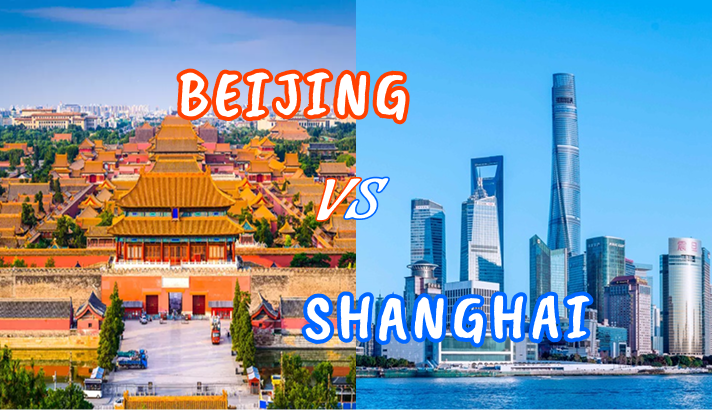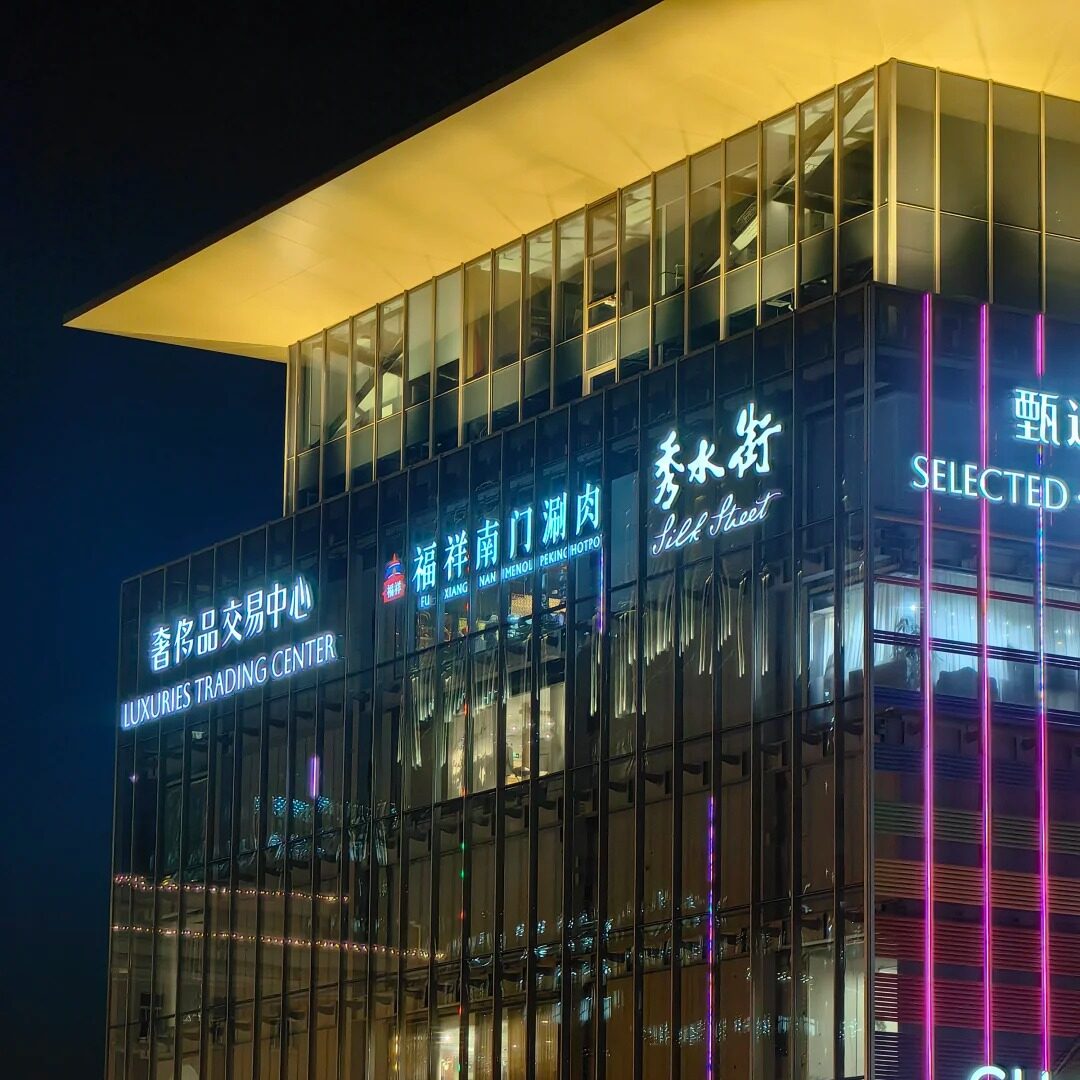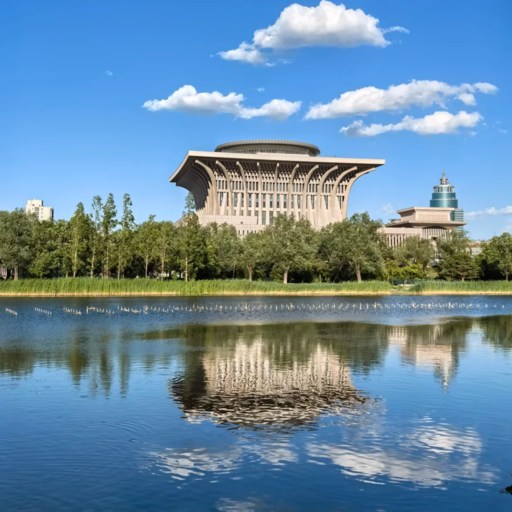
Olympic Park Beijing
Beijing Olympic Park is the site of 2008 Beijing Olympic Games. It is spread over 11.59 square kilometers in the northern part of Beijing. There are total of 10 Olympic venues during the 2008 Olympic Games including Bird's Nest, Water Cube, National Indoor Stadium, National Convention Center, Yingdong Natatorium and Olympic Green Archery Field and so on. What’s more, at the north of Olympic Green there is a biggest forest park in Beijing, which makes people have access to take an outing. It is now an integrated public activities center including sports and cultural events, exhibitions, street performances and nightly concerts. A great many will come here on a nice day, to take a walk or fly a kite with their kids.
Quick Facts about Olympic Park Beijing
| Location | North 4th Ring Road, Chaoyang District, Beijing |
| Metro Access | Line 8 – Olympic Sports Center & Olympic Park Station |
| Admission | Free entry to park area; Bird’s Nest (¥60), Water Cube (¥30) |
| Opening Hours | Park: 6:00–22:00; Bird’s Nest: 9:00–19:00; Water Cube: 10:00–20:00 |
| Area | 11.6 sq km (including Forest Park) |
| Highlights | Bird’s Nest, Water Cube, Olympic Tower, Forest Park trails |
| Nearby Eats | North Star Shopping Center, Wangjing Area restaurants |
Why Olympic Park Beijing Is Worth Visiting (More Than Just Old Stadiums)
- Night Scene of Olympic Park
- Plants in Olymipic Park
The Legacy Beyond 2008 — A Living City Landmark
The 2008 Olympics are still so fresh in people’s minds it feels like they happened yesterday, but to walk around Olympic Park Beijing is to realize that the narrative of the Games did not stop when they ended. The Bird’s Nest is not just a monument but a daily rhythm now. Before the ambient hum of a large city has fully ramped up, and the air is merely nippy, joggers orbit the stadium’s red steel frame; their footsteps decerebrate softly with each step on the paved ground. The massive plazas on which athletes once played now feel spacious and serene, almost meditative. I heard another traveler from Spain whisper that it was “strangely peaceful for such a giant place.” Perhaps that’s the alchemy at work here — it bears the pride of history while wearing it lightly.
By late afternoon, the sunlight slips through between the Bird’s Nest beams, reflecting off the Water Cube and turning its glassy blue surface into something alive. Tourists whip out their phones, locals take selfies in front of the fountains, and the whole place is suffused with quiet nostalgia. When the lights turn on some nights, it feels as if the Games might resume anew. The roar of the crowd isn’t now for medals but that feeling — that little taste of something bigger than sport — persists. That’s why they come back. It’s not a mere old venue; it’s the modern pulse of Beijing. For anyone who has been wondering whether Olympic Park Beijing is worth visiting, the answer may well be here: that muffled sound of footsteps and camera clicks.
Locals’ Park Life — Morning Tai Chi and Night Dance
Arrive early and you’ll see another face of the park. Retirees line the well-maintained paths beside the Olympic Forest Park ponds where ta people move in slow purposeful motion, performing Tai Chi stretches. The scent of damp grass is tinged with soft music from a portable speaker, and a small dog might wander into the midst of the group before being gently shooed away. It’s mundane, just ordinary life, but in a way that you won’t soon forget.
The same squares come back to life when night falls. The lights from the Water Cube spill onto the ground and local residents begin their open-air dances — old pop songs, rhythmic clapping, an occasional burst of laughter. Groups of teenagers practice skate tricks by the steps; families walk with milk tea in hand. If you’re wondering what to do in Olympic Park Beijing at night, this is it — match the rhythm, even if you don’t know the steps. To see that balance of generations move together under neon skies — it feels like the city is dancing as well, grounded and infinitely alive.
What to See in Olympic Park Beijing — From Bird’s Nest to the Forest Park Trails
The Bird’s Nest (National Stadium)
The Bird’s Nest feels familiar the instant it enters your field of vision — its twisted steel frame looks inhuman against Beijing’s skyline, even if you’ve never watched a single game televised from an Olympics. Inside, it’s quieter than expected. You go through echoing hallways where the sound of your footfalls bounces off steel walls until suddenly the field explodes into view, huge and bright under its retractable roof. Guided tours detail how the stadium has a capacity of 80,000 fans, but the best part is standing in its center and imagining that roar from 2008.
If you’re curious about how this colossal design came to symbolize Beijing’s modern spirit, check out this full story on the Bird’s Nest and its architecture.
At night, the Bird’s Nest glows red, like embers in a slow fire. The reflection fans out across these plaza pools, and it’s a dream for any photographer. TripAdvisor reviewers rate it 4.5 out of five stars, and the consensus tends to be “a once in a lifetime view.” Tickets cost around ¥60 (available on Trip.com), and combo tickets that include the Water Cube are available. If you’re planning to visit close to sunset the sky turns from gold to deep purple behind the stadium—it’s the sort of view that lives long in your camera roll.
The Water Cube (Now the Ice Cube)
And on the opposite side of the square, its mirror image — once known as the Water Cube but rebranded as the Ice Cube in a nod to Beijing’s 2022 Winter Olympics. The change of scenery with ice sports from water isn’t purely symbolic. In the hall, curling and skating are demonstrated; in fact you can even give indoor ice activities a go yourself for around ¥80–100. It’s a favorite of families, and let’s be honest: It’s also enjoyed by most bachelors who want to slide across the Olympic floor just once in their lives.
By night, the building transforms. Each of those bubbles on the façade will light up blue and then transition slowly through pinks and violets. It’s a living aquarium, as close as you can get from a distance. Neighborhood people line benches and eat candied haw or corn on the cob as kids chase colored reflections across the ground. This is for many the real place to be at night in Olympic Park Beijing — less crowded than the stadium but no less hypnotic.
Olympic Forest Park — Beijing’s Urban Lush Lung
A different world sits a bit to the north. The Olympic Forest Park runs along both sides of the Fifth Ring and is divided into South and North by a handsome footbridge. South Park feels sculpted: flat paths, ponds with lotus, an artful dragon-shaped water system. North Park feels untamed, with thick groves and hills that make you forget you’re in a capital city. Some locals jog here every day; others come with fishing rods, or yoga mats.
There’s a 7.5-kilometer bike trail that loops around both parks, which is accessible through rental bikes available at stations parked near the south gate. In spring, the cherry blossoms will turn the trails blush pink; in autumn, ginkgoes paint everything gold. Nothing quite like the scent of fresh pine after a summer shower! TripAdvisor terms it the “most tranquil green zone in Beijing,” and I’d concur — it’s the city’s lungs, exhaling fresh air into an Olympic district. Admission is free, though budget at least two hours to wander; the park feels larger than it will ever look on a Beijing Olympic Park map.
Olympic Tower & Ling Long Pagoda
If you walk on a path north of the Bird’s Nest, five silver towers jut into the sky like tuning forks — the Olympic Tower Beijing. It stands 246 meters tall, and on a clear day you can make out the faint outline of the Forbidden City to the south. The glass elevator ride lasts a minute, and at the top you get a grand sweep over the entire Olympic Park Beijing area — stadiums below, with Forest Park fading away into haze in the distance. Tickets around ¥120, from 9:00 to 19:00 daily.
Next to it is Ling Long Pagoda, a six-sided tower that is overlooked but was used for broadcasting media during the Games." It is not open to climbing but its symmetry makes photographers adore it. Go early, around 5:30 p.m., when the sunset slices diagonally through its frame; that’s when the entire skyline looks like a painting. There are many locals who stand here with tripods, waiting for the Bird’s Nest to be illuminated again. Time it right and you’ll see the park flicker to life from day into neon—proof that Beijing knows the secret of how to make history glow twice.
How to Visit Olympic Park Beijing — Metro, Tickets, and Best Time
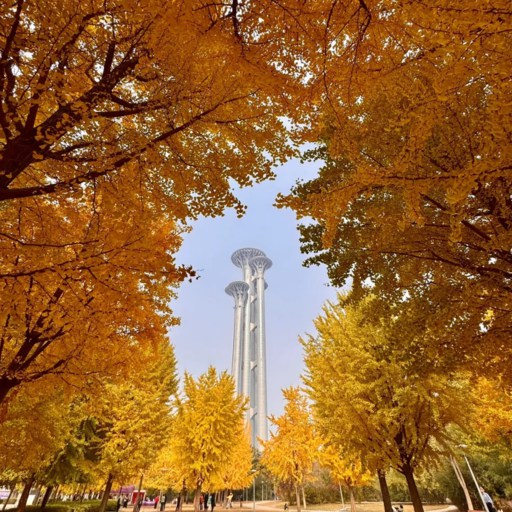
Autumn of Olympic Park
Getting There Easily by Metro Line 8
If you’re making plans for how to get to Olympic Park Beijing, the subway is a way to save time and hassle. Line 8, basically your lifeline — like how convenient that it was built for the Games and all, and still cuts straight through this amazing park we made. It is 25-30 minutes from Tianamen East or Nanluoguxiang. Alight at Olympic Sports Center (奥体中心) or Olympic Park Station (奥林匹克公园站; ideally you come out of them in the main square. The Bird’s Nest is just a 5-minute walk from there and the Water Cube is directly opposite.
Trains run every few minutes, and signs are bilingual (though some older station names stubbornly retain whimsical “pinyin” spellings that might even coerce the occasional grin). If you like cabs, it will run about ¥45–60 from the city center (traffic dependent). Some ride-hailing platforms like Didi list the stop as “Aoti Zhongxin,” so keep that in mind when you type it. Do not drive here unless you like spending half-an-hour looking for a parking space — the lots will fill quickly on weekends.
Tickets and Entry Rules
The best part: the majority of Olympic Park Beijing is open to all — and free. You can roam the plazas, lakes and Olympic Forest Park free of charge. But the main venues charge admission on their own. Bird’s Nest: ¥60, Water Cube: ¥30, Olympic Tower: ¥120 (combo tickets are collectively about 180-yuan-ish for the three). Reservations are available online at Trip. com
, through WeChat Mini Programs or make on-the-spot payments at the gate via Alipay or WeChat Pay. Foreign bank cards function perfectly fine on these apps once you’re connected—no Chinese ID required.
Security is about what you would expect at any big site in Beijing: bag checks, metal detectors and some ID checking for local visitors. You can bring selfie sticks, but don’t even think about bringing drones. The park opens at around 6 a.m. and is officially closed by 10 p.m., but attractions such as the Tower or Stadium have their own Olympic Park Beijing hours available online. If you are going to stay for the night lights, make sure to get inside before 9 p.m. — guards generally start closing side gates early.
Best Time to Visit & When to Avoid the Crowds
The key to appreciating Olympic Park Beijing is timing. Spring (April to May) Features pink cherry blossoms and fresh new green, perfect for photos with Forest Park. Yes, summer can include some scorching sun, but the shaded bike paths and evening breeze help make it bearable. With late September through early November being everyone’s favorite — the air is crisp, ginkgo leaves fall and sunsets around the Water Cube are surreal. In winter you might stumble upon small ice festivals and — if it is cold enough — snow blanketing the open squares, which then become hushed white fields.
Weekday mornings are quiet — you’re most likely here to jog or take pictures, and if you find anybody, they’ll probably be retiring with Tai Chi. Dusk turns afternoons into a crowded pageant, especially on holidays, when every corner of the square fills with people and the thickest knot forms up by the Bird’s Nest. That said, I wouldn’t pass up the nighttime foray; with lights playing on water and reflections multiplying that park feels born again. That is the magic of good trip planning: calm weekday mornings, wonderstruck nights.
Small Surprises Inside Olympic Park Beijing
- Flower in Olympic Park
- Musical Fountain of Olympic Park
Food and Coffee Spots Around the Park
After a few hours walking through Olympic Park Beijing, you’ll want something comforting—and maybe air-conditioned. The south side of the park near Beichen Road has several coffee corners that feel surprisingly local. There’s Maan Coffee, famous for its brick-oven waffles and strong Americano, where you’ll probably see students sketching or runners cooling down with cold brew. Average cost is (¥40–80/人). A few blocks further sits %Arabica Beijing Aoti Branch, minimalistic but with perfect espresso and a view of the Bird’s Nest.
If you’re craving something heavier, cross to Beichen Mall (北辰购物中心) on the east side. The food court buzzes with energy—dumpling stalls, Sichuan noodles, Korean barbecue, even bubble tea chains. It’s not fancy, but that’s exactly the charm. TripAdvisor reviewers mention that prices here are fair and portions generous. I’d add: go before 6 p.m. if you want a table near the window; locals flood in after work, especially on Friday nights.
Nighttime Lights and Events
Ask anyone what to do in Olympic Park Beijing at night, and they’ll probably say “just walk.” When the Bird’s Nest turns red and the Water Cube glows deep blue, the entire square transforms. You’ll see couples taking selfies under reflections, older folks spinning LED ribbons, and kids racing remote cars across the pavement. Around national holidays, especially during the National Day Light Festival, temporary art installations and projection shows appear between the two main venues.
If you’re the kind who enjoys Beijing after dark, with street lights, snacks, and local chatter filling the air, you’ll love exploring these bustling night markets across Beijing.
TripAdvisor users often write that “evening strolls feel safe and lively”, and that’s accurate—the wide plazas stay well lit and patrolled. Sometimes you might stumble upon a small live concert or group dance practice. No ticket, no schedule—just people using public space the way it was meant to be. Bring a jacket, though; by 9 p.m., the breeze off the lake gets unexpectedly cool.
FAQ about Olympic Park Beijing
Q: Is Beijing Olympic Park free?
Most of Olympic Park Beijing is free to enter, including the plazas and Olympic Forest Park. You pay only for indoor facilities, including the Bird’s Nest (¥60) and Water Cube (¥30). Entry points are open 6:00 a.m. to 10:00 p.m. Sometimes guards shut smaller gates a bit earlier, so it’s a good idea to check what signs say nearer the metro exit before boarding.
Q: How long should I spend at Olympic Park Beijing?
It all depends on what you’re shooting for. You might need about two hours if you only visit the Bird’s Nest and Water Cube, but allocate half a day if you enjoy walking/photography. The Olympic Forest Park Itself is a morning well spent. Borrowed water—distances between sights are farther than most Beijing Olympic Park maps indicate.
Q: Can I enter Bird’s Nest and Water Cube?
Yes, both welcome visitors year-round. You can check out the seats and views in and around the field at the Bird’s Nest, or see some of its exhibitions; there’s now an indoor ice surface inside the Water Cube. Tickets are available at the venue and on Trip. com, or on WeChat Mini Programs. Weekends are packed full, so buy in advance if you can.
Q: When is the best time to visit Olympic Park Beijing?
They local say it’s hard to beat late afternoon through dusk — the light softens and the reflections are beautiful. Spring and fall are the best seasons to enjoy favorable weather. Think twice about a midsummer noon; the plaza can be an oven. Winter visits are nice, too, as long as you don’t mind cold air and a little snow.
Q: Are there restaurants or cafes nearby?
Yes, plenty. The south side has cozy coffee shops like Maan Coffee and %Arabica, while Beichen Mall nearby offers dumplings, noodles, and barbecue at around ¥40–80 per person. If you’re wondering what to do in Olympic Park Beijing after sightseeing, grabbing local snacks is a good idea.
Q: Can foreigners buy tickets online?
Absolutely. Tickets for Olympic Park Beijing can be purchased via WeChat Pay, Alipay or Trip. com with non US Visa or Mastercard. You’ll only need your passport number to verify purchase. Seasonal rates may fluctuate somewhat, but most platforms display real-time availability in English.
Q: Is Olympic Park Beijing safe at night?
Yes, very. The park remains bright and well-patrolled until it closes. Families, joggers and photography groups stick around past 9 p.m. It’s one of the few big spaces in Beijing that feels open and safe after dark. Ishana Komal: If you’re walking alone, follow the main paths and the lighted areas.
Q: Are English signs and guides available?
Yes. Most directional signs are actually in English and Chinese. At big venues inside Olympic Park Beijing, English, French and Japanese audio guides are available for a nominal fee (¥30–50). Staff members are conversant in basic English, and there are digital maps on Trip. com or WeChat provide bilingual navigation features for user-friendly convenience.
